25+ SAMPLE Construction Indemnity Agreement
-

Construction Corporation Indemnity Agreement Template
download now -
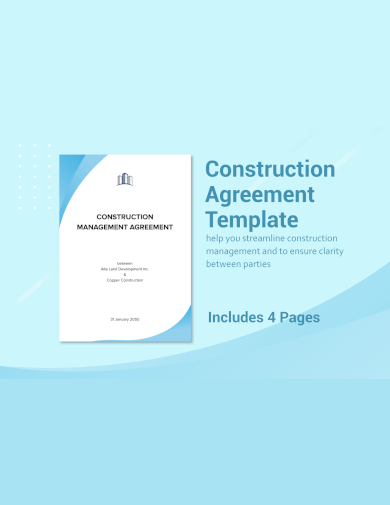
Construction Agreement Template
download now -
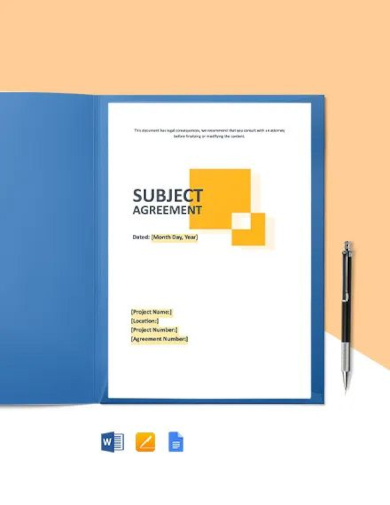
Simple Construction Agreement Template
download now -
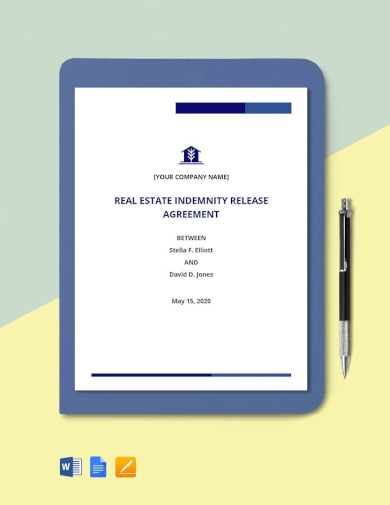
Real Estate Indemnity Release Agreement Template
download now -

Construction License Agreement Template
download now -
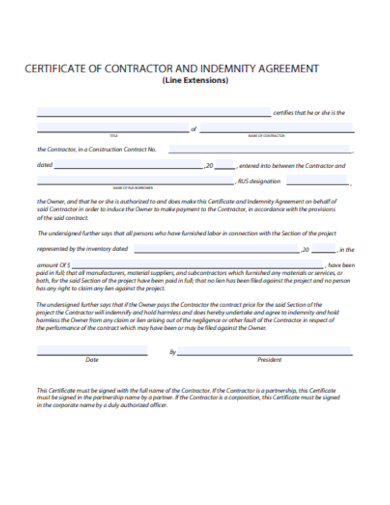
Construction Contractor Indemnity Agreement
download now -
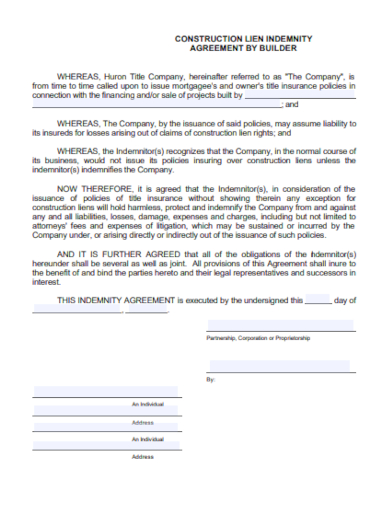
Construction Lien Indemnity Agreement
download now -
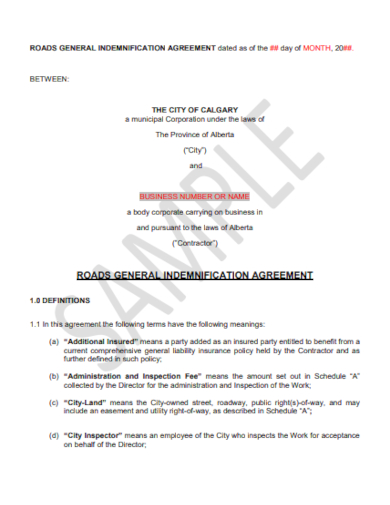
Road Construction Indemnification Agreement
download now -

Construction Indemnity Clause Contract
download now -
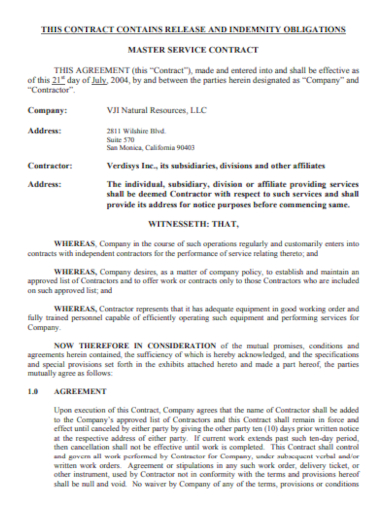
Master Construction Indemnity Agreement
download now -
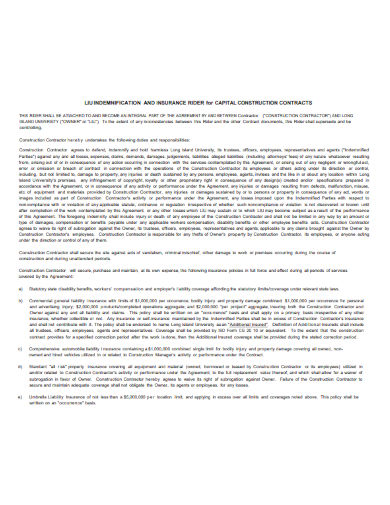
Construction Insurance Indemnification Agreement
download now -

Construction Indemnification Provision Agreement
download now -
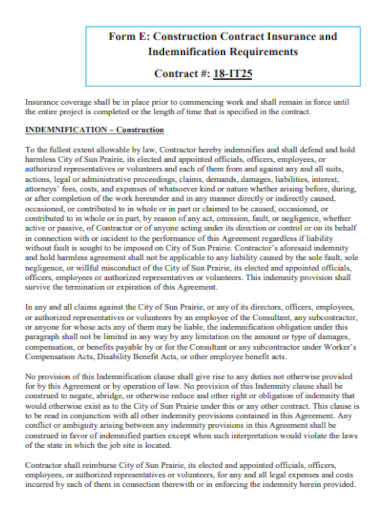
Construction Insurance Indemnification Contract
download now -
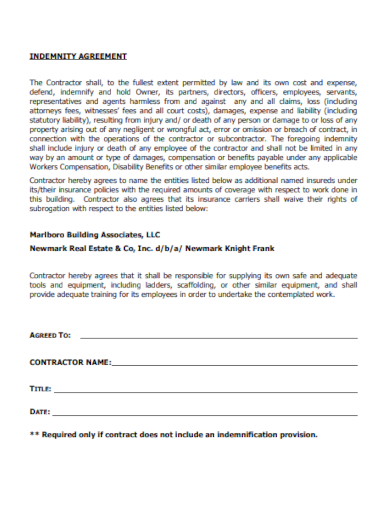
Building Construction Indemnity Agreement
download now -
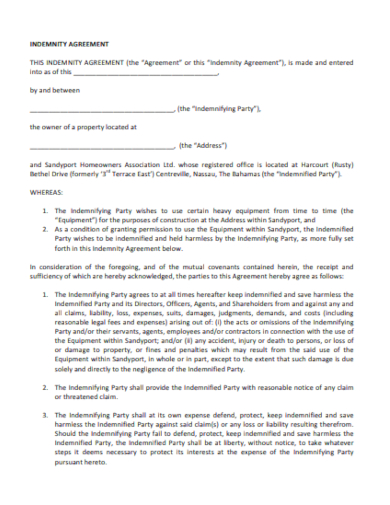
Construction Indemnity Agreement Form
download now -
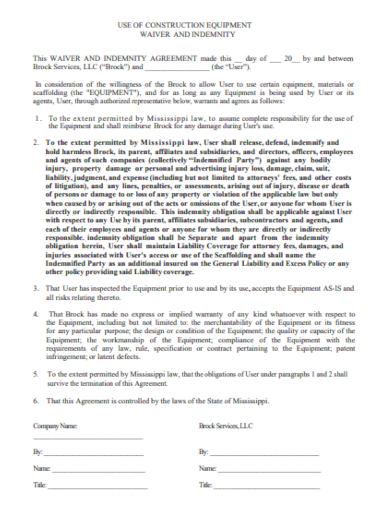
Construction Equipment Indemnity Agreement
download now -
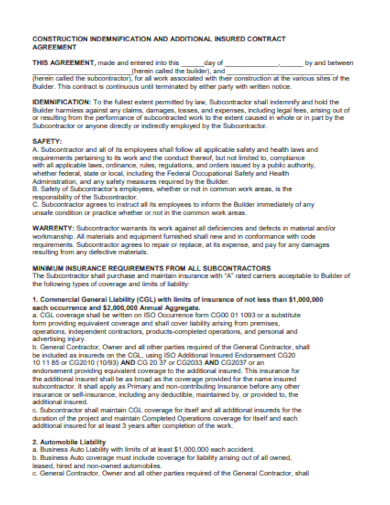
Construction Indemnification Contract Agreement
download now -
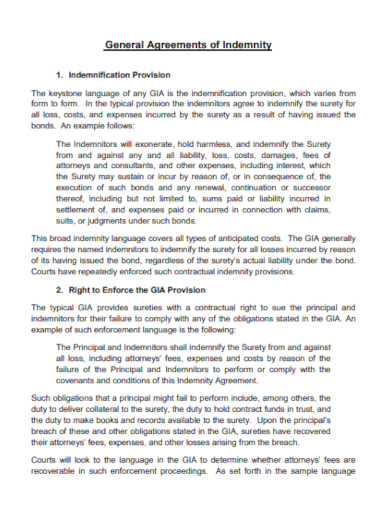
General Construction Indemnity Agreement
download now -
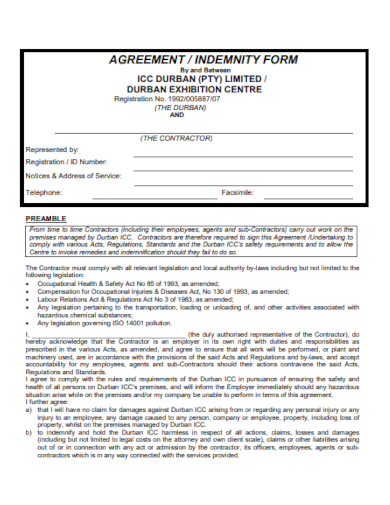
Contractor Construction Indemnity Agreement
download now -
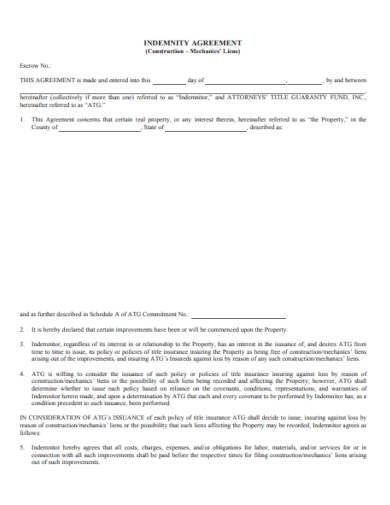
Construction Mechanics Indemnity Agreement
download now -
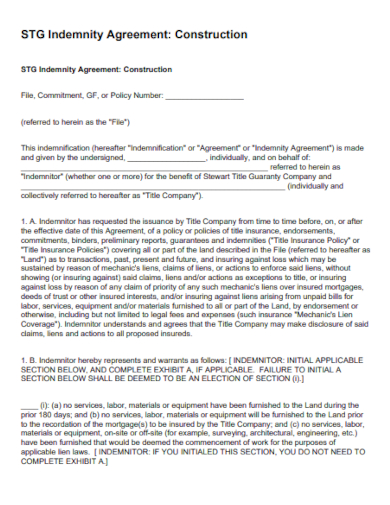
Construction Harmless Indemnity Agreement
download now -

Builder Construction Indemnity Agreement
download now -
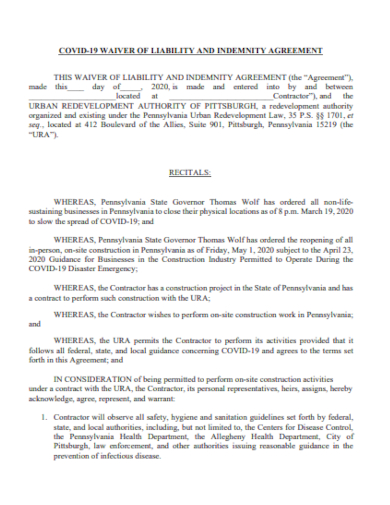
Construction Liability Indemnity Agreement
download now -
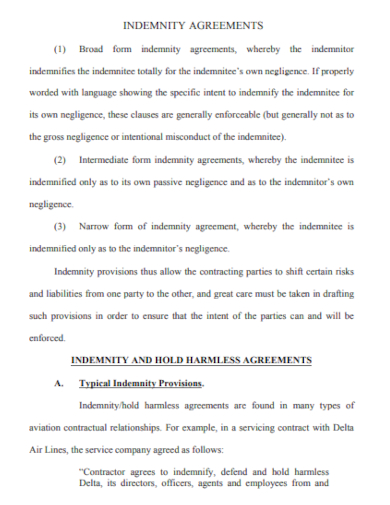
Construction Hold Harmless Indemnity Agreement
download now -
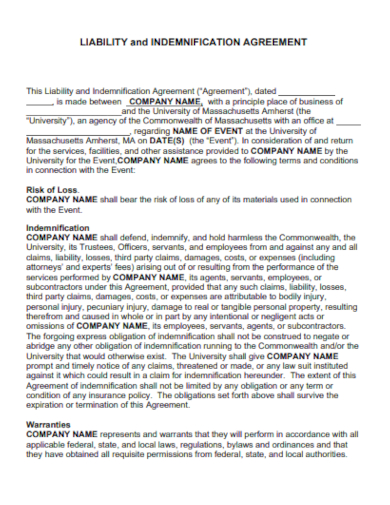
Construction Liability Indemnification Agreement
download now -
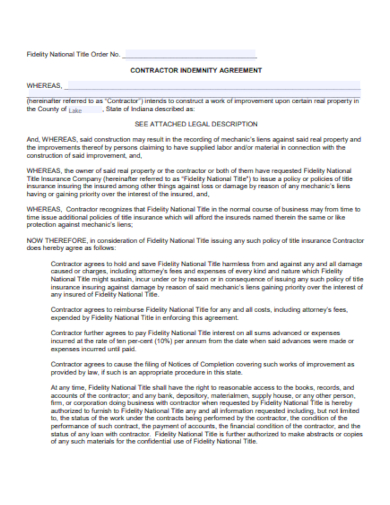
Construction Indemnity Agreement Format
download now -
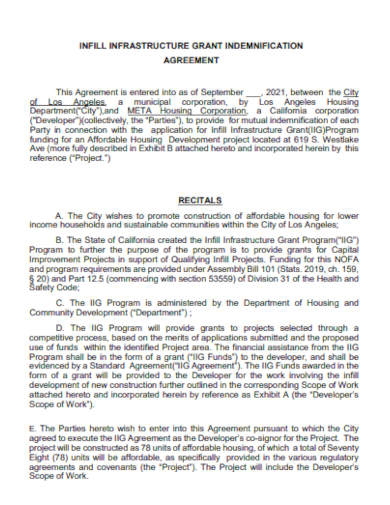
Housing Construction Indemnity Agreement
download now -
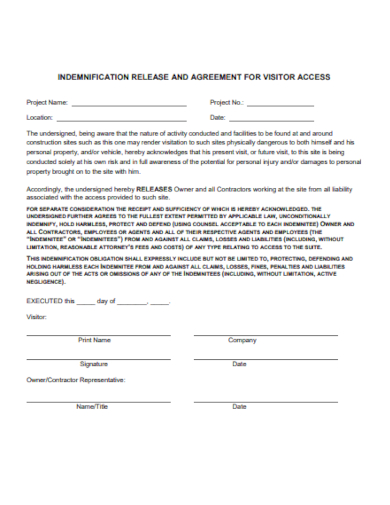
Construction Indemnification Release Agreement
download now
FREE Construction Indemnity Agreement s to Download
25+ SAMPLE Construction Indemnity Agreement
Definition:
Navigating the Construction Indemnity Agreement: A Safeguard for Your Project
The Cornerstones of a Construction Indemnity Agreement:
The Legal Landscape: Understanding Your Indemnity Agreement
Crafting Your Agreement: Best Practices for Mitigating Risk
Beyond the Basics: Enhancing the Efficacy of Indemnity Agreements
What should be included in a Construction Indemnity Agreement?
What does indemnification mean in a Construction Contract?
Who benefits from a Construction Indemnity Agreement?
How does indemnity agreement protect subcontractors?
Is a Construction Indemnity Agreement legally binding?
How do indemnity clauses manage risk in construction projects?
Definition:
A Construction Indemnity Agreement is a legally binding contract where one party agrees to protect another from any financial losses or liabilities incurred due to actions of the indemnifier or third parties during a construction project. It is an essential tool for managing risk, transferring potential costs of claims, and providing a safety net against legal and financial responsibilities.
Navigating the Construction Indemnity Agreement: A Safeguard for Your Project
In the complex world of construction, risk is an inherent element. The Construction Indemnity Agreement stands as a vital safeguard, designed to protect parties from liability and financial loss. This legally binding document serves as a protective shield, often transferring risk from one party to another, ensuring that the responsible entity bears the potential costs of certain risks, accidents, or damages.
The Cornerstones of a Construction Indemnity Agreement:
The essence of a solid indemnity agreement in construction projects lies within its core components:
Understanding the Scope of Indemnity:
The scope of indemnity is the backbone of the agreement, defining the extent to which indemnification is provided. This includes detailing the specific types of claims covered, such as injury, property damage, or legal liabilities, and any limitations to the coverage. Clarity in this section is vital to prevent misunderstandings and future disputes.
Identifying the Parties and Their Obligations:
A clear identification of all parties involved—indemnifiers, indemnitees, and any relevant third parties—is essential. This section also outlines the obligations of each party, ensuring that the responsibilities and the extent of the protection offered are understood by all.
Terms of Indemnification:
This segment elaborates on the terms under which indemnification is triggered, the procedures for claim notification, and the process for handling claims. It includes deadlines, documentation requirements, and any conditions precedent to the indemnifier’s obligations.
Limitation of Liability:
Establishing the limits of liability is crucial to protecting the indemnifier from excessive exposure. This might include monetary caps on indemnification, time limits for filing claims, and any exceptions to the indemnification agreement clause.
Duration of Coverage:
Detailing how long the indemnification is in effect, including any provisions for survival of indemnity obligations post-completion of the construction project, ensures that all parties understand the time frame of the coverage.
Dispute Resolution:
A mechanism for resolving any disputes arising from the indemnity agreement, such as arbitration or litigation, can streamline the process and provide a predefined path for legal recourse.
Governing Law and Jurisdiction:
Specifying the governing law and the jurisdiction under which any disputes will be resolved provides a legal framework for the agreement and helps to manage expectations regarding the legal context of indemnification claims.
The Legal Landscape: Understanding Your Indemnity Agreement
Each jurisdiction has its own laws governing indemnity agreements. These can vary widely, so it’s essential to:
Deciphering Legal Jargon:
A Construction Indemnity Agreement often contains complex legal terminology that can be difficult to navigate. This section breaks down the legal jargon into plain language to ensure that all parties fully understand the terms and implications of the indemnity clauses.
Navigating State Laws and Regulations:
The indemnity agreement is not created in a vacuum and must adhere to the specific state laws and regulations that govern such hold harmless agreements. This area of the agreement should outline how state laws affect the terms of indemnity and the enforceability of the agreement.
The Enforceability of Indemnity Clauses:
Not all indemnity clauses are created equal, and some may not be enforceable due to being overly broad or violating public policy. This part examines the factors that contribute to the enforceability of indemnity clauses and how to structure them within legal boundaries.
Amendments and Modifications:
Understanding how and when an indemnity liability agreement can be amended or modified is key. This includes the process for making changes and the necessary approvals required to ensure the changes are legally binding.
Legal Remedies and Defense Obligations:
It’s imperative to outline the legal remedies available if the indemnity clause is breached, including any defense obligations. This ensures that all parties know their rights and the recourse available should they need to defend against a claim or enforce the agreement.
Severability and Integration Clauses:
These clauses ensure that if one part of the agreement is found to be invalid, the remainder of the vendor agreement still stands. It also affirms that the written agreement is the total understanding between the parties on the subjects covered.
Signatures and Legal Formalities:
The agreement must meet all legal formalities to be valid, including signatures from all parties with the legal authority to bind the respective parties. This section also covers the requirement for witnesses or notarization, where applicable.
Crafting Your Agreement: Best Practices for Mitigating Risk
To ensure that your Construction Indemnity Agreement is robust and effective:
Aligning Indemnity with Risk Allocation:
Best practices in crafting a construction indemnity agreement involve aligning the indemnity provisions with the project’s risk allocation strategy. This means clearly defining which parties are responsible for certain risks and ensuring that the indemnity agreement reflects this allocation.
Tailoring Clauses to Specific Scenarios:
Rather than using generic indemnity clauses, it is crucial to tailor the indemnity language to the specific scenarios and risks associated with the construction project. This specificity reduces ambiguity and helps to prevent disputes over the interpretation of the agreement.
Subrogation Rights:
Define the subrogation rights within the construction agreement to ensure that if an insurance company pays out a claim, they can seek recovery from the party responsible for the loss. This clause is essential for mitigating risks and protecting the interests of all parties involved.
Periodic Review and Adjustments:
The construction environment is dynamic, and risks can evolve. Incorporate a mechanism for periodic review and adjustment of the indemnity provisions to respond to new risks or changes in the project scope or laws.
Clear Definitions and Interpretations:
Provide clear definitions for key terms and how they should be interpreted within the context of the agreement. This clarity can significantly reduce the potential for misunderstandings and legal challenges.
Robust Insurance Requirements:
Ensure that all parties have robust insurance policies in place that align with the indemnity provisions. This serves as a financial backstop and reduces the likelihood that indemnity obligations will cripple a company financially.
Legal Review and Oversight:
Before finalizing the indemnity agreement, have it reviewed by legal counsel specializing in construction law. This ensures that the agreement is not only fair and equitable but also complies with all relevant laws and industry standards.
Beyond the Basics: Enhancing the Efficacy of Indemnity Agreements
To maximize the efficacy of a Construction Indemnity Agreement:
Establishing Comprehensive Coverage Terms:
To enhance the efficacy of indemnity agreements, it’s critical to establish comprehensive coverage terms that unambiguously spell out the extent and limits of the indemnification. This includes specifying the types of claims covered, such as property damage, personal injury, or intellectual property infringement, and any exceptions.
Ensuring Mutual Protection:
While traditionally indemnity agreements may favor one party, crafting an agreement that ensures mutual protection can facilitate a more equitable relationship. It should address the indemnities both parties will provide, fostering a balanced approach to risk sharing.
Clarity in Duty to Defend:
An indemnity agreement should explicitly state whether the indemnitor has a duty to defend the indemnitee against claims. Clarity on this point can prevent disputes and ensure prompt legal action when necessary.
Specifying Notice and Cooperation Clauses:
Insert clear clauses that stipulate the requirements for notice of a claim and the cooperation expected between parties. This includes timelines for notice after a claim is made and the degree of communication and documentation required throughout the claims process.
Financial Caps and Limitations:
Articulating financial caps and limitations within the agreement prevents open-ended liabilities. Defining a maximum amount for indemnity obligations provides financial certainty and reassures all parties of the extent of potential liabilities.
Incorporating Indemnity Trigger Events:
Define specific events or circumstances that will trigger the indemnity provisions. By detailing these trigger events, parties can quickly identify when the indemnity terms apply, streamlining the process and reducing the room for interpretation.
Addressing Subcontractor and Third-Party Issues:
Given that construction projects often involve multiple subcontractor agreements and third parties, the indemnity agreement should cover how indemnity applies in these contexts. This includes the flow-down of indemnity obligations to subcontractors and the protection against third-party claims.
Legal Compliance and Current Practices:
Ensure that the indemnity bond agreement adheres to the legal requirements of the jurisdiction where the project is located and reflects current construction and insurance practices. This means regularly updating the terms in line with changes in laws and industry standards.
What should be included in a Construction Indemnity Agreement?
A Construction Indemnity Agreement should include clear definitions of indemnity terms, specific risks and liabilities covered, obligations of the indemnifying party, exceptions, the scope of indemnification, any insurance requirements, and conditions under which the indemnity is enforceable.
What does indemnification mean in a Construction Contract?
In a construction contract, indemnification refers to a provision where one party agrees to protect the other from certain losses or claims, often related to accidents, property damage, or legal liabilities incurred during the construction project.
Who benefits from a Construction Indemnity Agreement?
A Construction Indemnity Agreement benefits property owners and general contractors by shifting the risk of potential legal claims and financial losses due to accidents, negligence, or unforeseen events to the subcontractors or parties responsible for causing such issues.
How does indemnity agreement protect subcontractors?
An indemnity agreement can protect subcontractors by transferring the risk of certain losses or claims to another party, typically the contractor or project owner, thereby limiting the subcontractor’s potential liability for damages or legal issues arising from their work.
Is a Construction Indemnity Agreement legally binding?
Yes, a Construction Indemnity Agreement is legally binding when properly executed, containing clear terms, signed by all involved parties, and when it does not violate public policy or laws, thus creating enforceable obligations regarding liability and compensation for losses.
How do indemnity clauses manage risk in construction projects?
Indemnity clauses manage risk in construction projects by legally outlining the responsibilities for certain types of losses or damages, ensuring that the party best positioned to control the risks bears the cost of potential claims or legal actions.
In conclusion, the Construction Indemnity Agreement stands as a cornerstone of risk management, embodying due diligence and proactive protection for all construction stakeholders. By ensuring a clear delineation of indemnity provisions, it not only shields against unforeseen liabilities but also serves as a testament to the integrity and foresight of conscientious project construction management agreement. Its role is pivotal in maintaining the equilibrium of trust and responsibility in the construction industry.
